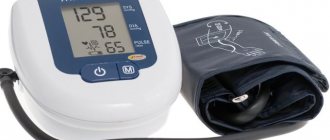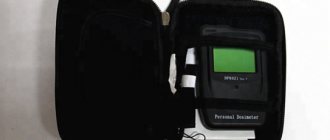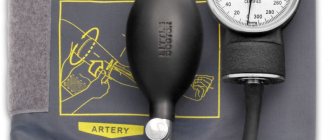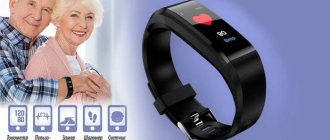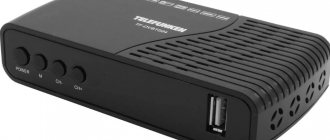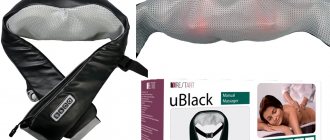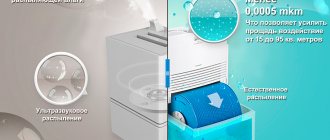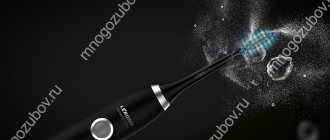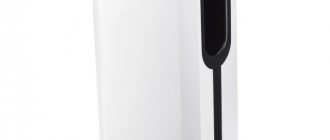How measurements work
At the moment when the pressure in the cuff exceeds the blood pressure, the cuff compresses the artery and blood flow stops. As the pressure in the cuff slowly decreases, the artery opens slightly. When the lumen in the artery is small, blood turbulence creates noise. When we measure blood pressure with a stethoscope, at that moment we record the upper pressure. When the artery is completely open, the noise disappears - we fix the lower one.
The speed at which the air leaves the cuff affects the accuracy of the measurements. Therefore, semi-automatic blood pressure monitors may give an error, since you release air into them with a manual valve. And automatic blood pressure monitors are more accurate than any other - the pressure in the cuff is automatically regulated, and noise is recorded by sensors.
Mechanical
To find out which tonometer is accurate, pay attention to mechanical devices. They consist of a shoulder cuff, a pressure gauge and an air pump with an adjustable valve. Blood pressure readings are determined by listening to characteristic sounds through a stethoscope. In this case, blood pressure is measured by a person who has the appropriate skills, so this type of equipment is recommended for healthcare workers. It is often used in public health facilities such as hospitals. Which tonometer is more accurate - popular models:
- Healthcare CS-105. High-precision mechanical device in a metal case from CS MEDICA. There is a built-in phonendoscope, a cuff (22-36 cm) made of nylon with a fixing metal ring, an elastic bulb with a needle valve and a dust filter. The kit includes a case for convenient storage of equipment. Relatively cheap (870 RUR).
- Healthcare CS-110 Premium. A professional device, the pressure gauge of which is combined with a bulb. Made in a shock-resistant polymer case with chrome coating. An enlarged cuff (22-39 cm) is used without a fixing bracket. There is a large and easy-to-read dial, a pleasant-to-touch pear with a chrome-plated release valve. The measurement accuracy is confirmed by the European standard EN1060. It costs more than its analogues (RUR 3,615).
- Microlife BP AG1-30. This high-precision sphygmomanometer consists of a bulb, an air release valve, and a storage bag. A professional cuff (22-32 cm) with a metal ring is used. The model is popular among domestic doctors. A distinctive feature is the stethoscope head sewn into the cuff. It is inexpensive (1200 rubles).
Operating principle of the sphygnomanometer
When measuring, the stethoscope must be applied to the inside of the elbow. After this, the specialist needs to pump air into the cuff - he does this until, due to compression, the blood pressure level drops to 30-40 mm Hg. Art. greater than the estimated systolic pressure (upper limit) of the person being tested. The air is then released slowly so that the cuff pressure decreases at a rate of 2 mm Hg. per second.
Gradually falling, the pressure in the cuff reaches the patient's systolic value. At this moment, noises called “Korotkoff sounds” begin to be heard in the stethoscope. Diastolic pressure (lower) is the moment when these murmurs end. The operating principle is as follows:
- When the air pressure in the cuff is pumped up and exceeds the same parameter in the vessels, the artery is compressed to such an extent that the blood flow through it is suspended. At this time there is silence in the stethoscope.
- When the pressure inside the cuff decreases and the lumen of the artery opens slightly, the blood flow resumes. At this moment, Korotkoff sounds begin to be heard in the stethoscope.
- When the pressure stabilizes and the artery opens completely, the noise disappears.
How to Measure Yourself Pressure with a MECHANICAL Tonometer
Pros and cons of mechanical devices
Which tonometer is more accurate? When answering this question, a mechanical device is in the lead. Advantages of a mechanical device:
- impressive accuracy;
- affordable cost;
- reliable;
- suitable for measuring blood pressure even in patients with arrhythmia.
The main disadvantage is considered to be the difficulty of operation, especially for older people and patients with poor vision and hearing, impaired movement of the limbs - for them it will be a useless acquisition. To make it easier to measure blood pressure, some models include a cuff with a built-in phonendoscope head and a combined supercharger with a pressure gauge. For this reason, a sphygmomanometer can still be purchased for use at home.
- Rabbit in a slow cooker
- What foods contain gluten?
- Treatment of seborrheic dermatitis of the scalp with folk remedies and medications
Main manufacturers
The majority of the tonometer market is occupied by OMRON, A&D, B.Well, Little Doctor, and Nissei.
Basic models
If you are buying a tonometer for preventive purposes, a simple model with the most necessary functions will suit you.
For example, all of these models are able to interpret the result, reporting high or low blood pressure. Their memory, as a rule, stores from 1 to 30 results, depending on the model. An important advantage of these tonometers is their low cost.
Tonometer A&D UA-888EAC economy with adapter
Tonometer OMRON M2 Basic (HEM-7121-RU)
Tonometer B.Well PRO-33
Little Doctor LD-30 tonometer with adapter
Automatic on the wrist
Wrist blood pressure monitors are mainly suitable for people involved in sports. They are convenient to take with you to training to quickly measure blood pressure. They are compact and look on the hand not like a medical device, but rather like an accessory. The most compact models are Little Doctor LD-12, OMRON RS1, A&D UB-402. However, wrist blood pressure monitors are considered less accurate than shoulder blood pressure monitors. The fact is that the vessels in the wrist are narrower. With age, the walls of blood vessels become denser, which also affects the accuracy of measurements. Therefore, people over 40 years old should choose a model with a cuff on the shoulder.
Wrist blood pressure monitors
Tonometer B.Well PRO-39
Tonometer OMRON RS2 (HEM-6121-RU)
Tonometer A&D UB-505
Tonometer B.Well MED-57
Advantages and disadvantages of automatic tonometers.
- Easy
to use. - They have many additional functions
. - In the case of wrist models, they are compact
.
- More expensive than
other types of tonometers. - Depends
on the power source. - If the battery charge is low, there is a risk of incorrect results
.
Semi-automatic blood pressure monitors
A semi-automatic blood pressure monitor differs from an automatic one in that you pump air into the cuff yourself. The design consists of a cuff, a digital pressure gauge and a rubber bulb.
When using a semi-automatic blood pressure monitor, inflate the cuff to 200–220 mm. rt. st using a pear. The device will do the rest itself.
Advantages and disadvantages of semi-automatic tonometers.
- Cheaper than
automatic devices. - Requires physical effort
. - There is a risk
of getting incorrect results if the battery charge is low.
Semi-automatic blood pressure monitors
Tonometer A&D UA-705
Tonometer OMRON S1 (HEM-4030-RU)
Tonometer B.Well PRO-30
Additional functions of automatic blood pressure monitors
Diagnosis of cardiovascular diseases
An automatic tonometer can detect symptoms of arrhythmia. If you are over 50 years old, we recommend choosing a blood pressure monitor with an arrhythmia indicator. If during the measurement process the arrhythmia icon appears on the screen frequently, it’s time to consult a doctor. Blood pressure monitors are available to help diagnose and treat other cardiovascular conditions, such as morning hypertension or atrial fibrillation.
Measurement log and built-in memory
Pay attention to whether the tonometer has a built-in memory or a special journal for recording measurements. A doctor may ask a person suffering from pressure abnormalities to keep a diary of measurements, indicating the time and result of the measurements. Some models can remember measurement results for two people or the results of morning and evening measurements.
Opportunities for the elderly
When choosing a device for an elderly person, pay attention to whether the numbers on the screen are large enough and readable and whether the screen has a bright backlight.
Blind people or people with poor vision will benefit from a voice-guided tonometer. He will voice all the stages of measurement and name the result.
Tonometers with voice guidance
Tonometer Little Doctor LD-51S
B.Well MED-53 tonometer with universal cuff
Little Doctor LD-3A tonometer with adapter
Increased measurement accuracy
User movement during measurement or a cuff that is not properly secured to the arm may affect the measurement accuracy. Sophisticated models reduce this risk of inaccuracy. Among the tonometers with motion indicators and indicators of correct cuff application, the A&D UA-1100 and OMRON M3 models are popular.
Tonometers: characteristics, types, types
— Pulse measurement. Ability to use a tonometer to measure heart rate (pulse). This frequency, along with blood pressure, is one of the most important indicators of the state of the cardiovascular system. — Determination of arrhythmia. Blood pressure monitors with this function are able to monitor irregularities in the heartbeat (arrhythmia) - one of the important signals of health problems - and warn the user about it.
— Calculation of average pressure. This function allows you to automatically calculate the average pressure based on several measurements in a row.
— Signal about measurement errors. Tonometers with this function are capable of displaying signals about errors that can affect the accuracy of measurements - such as incorrect application of the cuff, air leakage from it, movement during measurement, failure of the electronics of the device, etc.
— Auto shutdown. Most semi-automatic and automatic models of blood pressure monitors are capable of automatically turning off after several minutes of inactivity. This allows you to save battery power.
— Synchronization with PC. In this case, we mean a wired connection, not Bluetooth. Synchronizing the tonometer with a PC allows you to track all measurement results in one table (in some models, even indicating the date and time), save the results on the PC, freeing up the device’s memory, select measurements to calculate average pressure, etc.
— Bluetooth. The presence of wireless data transfer technology allows you to use the capabilities described in the “Synchronization with PC” paragraph by connecting to a smartphone and using a special application. This method is more mobile, simpler and faster.
— Vocalization of measurements. Such tonometers are capable of not only displaying measurement results on the screen, but also voicing them, which can be very useful for older people with poor vision.
— WHO color scale. The World Health Organization has its own standards, according to which certain pressure values are normal, weak or excessive. According to them, a color scale has been developed, which after each measurement allows you to understand the state of pressure and take appropriate measures. Naturally, each person is unique and for him the norm may be completely different pressure values, so this parameter as a whole is designed for the general mass of people and is often more advisory in nature than a call to action.
Tonometer equipment
Nutrition
All blood pressure monitors, except wrist ones, can be connected to the network. But not everyone has a network adapter included. Equipment may vary even for the same model. If you do not need to take measurements three times a day at the request of the doctor, then batteries will be enough. It is better for an elderly person to always have a power adapter on hand so that the batteries do not fail at the right time.
The cost also depends on the configuration. For example, the B.Well PRO-33 tonometer complete with a power adapter and a universal cuff is more expensive than without them. However, if you buy the adapter and universal cuff separately, you will overpay more. Therefore, it is better to decide in advance what equipment you need.
Cuff
Before purchasing, pay attention to the cuff size. A cuff that is too loose or too tight will cause measurement errors due to incorrect placement on the arm.
Before purchasing, measure your arm circumference. There are several standard sizes that may vary slightly depending on the manufacturer.
- Small
- 17–22 cm. - Standard
- 22–32 cm. - Large
- 32–42 cm. - Universal
- 22–42 cm.
If the tonometer will be used by several people at once, including older people, you should choose a device with a universal cuff so that there is no need to switch the cuff for each person.
Smart blood pressure monitor
A smart watch or fitness bracelet equipped with a pressure measurement function, depending on the model, may have other activity and health monitoring capabilities, including:
- heart rate measurement;
- counting steps, calories;
- recording of an electrocardiogram (ECG).
Fitness bracelets with heart rate monitor
Xiaomi Mi Band 6 from RUR 2,729 Apple Watch SE 40 mm from RUR 21,200 Apple Watch 6 Aluminum 44 mm from RUR 27,490 Samsung Galaxy Watch Active 2 44mm from RUR 13,200 Huawei Watch GT 2 Pro from RUR 15,330 Samsung Galaxy Watch Active 2 40mm from RUR 12,890 Apple Watch SE 44 mm from RUR 24,680 Apple Watch 6 Aluminum 40 mm from RUR 25,580 Samsung Galaxy Watch 3 45mm from RUR 17,980 Xiaomi Mi Band 5 from RUR 1,928 Huawei Band 6 from RUR 2,990 Xiaomi Amazfit GTS 2 from RUR 10,970 Samsung Galaxy Watch4 44mm from RUR 18,181 Samsung Galaxy Watch4 Classic 46mm from RUR 24,940 Xiaomi Amazfit GTS 2 Mini from RUR 5,990 Xiaomi Amazfit Bip U Pro from RUR 3,845 Xiaomi Mi Band 4 NFC from RUR 2,190 Samsung Galaxy Watch4 40mm from RUR 15,980 Xiaomi Mi Watch Color Sports from RUR 7,219 Xiaomi Amazfit GTS 2e from RUR 7,908
When choosing a smart device for blood pressure monitoring, it is important to decide what the main goal is. If monitoring blood pressure and heart rate is a secondary task, and the functions of a watch/fitness bracelet are more needed, you should choose them. If you need constant blood pressure monitoring with accurate readings, it is better not to combine several devices in one and purposefully buy a smart blood pressure monitor, such as Xiaomi iHealth 2.
The reliability of the blood pressure measurement algorithm in smart gadgets has not yet been fully studied. Although many predict a great future for them, and the development of smart technologies gives no reason to doubt it.
| Fitness bracelet with blood pressure monitor. |
Types and sizes of cuffs
The cuffs are worn on the shoulder or wrist. The first option is divided into three main types, depending on the patient’s arm circumference:
- children's (from 15 to 22 cm);
- standard (22 – 32 cm);
- universal (22 – 42 cm).
That is, we measure the circumference of the shoulder and see what numbers we fall into. In practice, the universal cuff is the most common and is suitable for almost all adults, regardless of body size.
There are cuffs of longer length, but not from all manufacturers. Only leading brands, such as Omron or Microlife, offer a wide range of sizes.
With a cuff on the wrist, things are much simpler. Here it is important to focus only on your own comfort and take into account age. A wrist blood pressure monitor will be more accurate for people under 50 years of age. This is due to the fact that the artery in the wrist is thinner than in the shoulder, and over the years it becomes even weaker, so data in older people may be read incorrectly by such a device.
| Wrist tonometer. |
